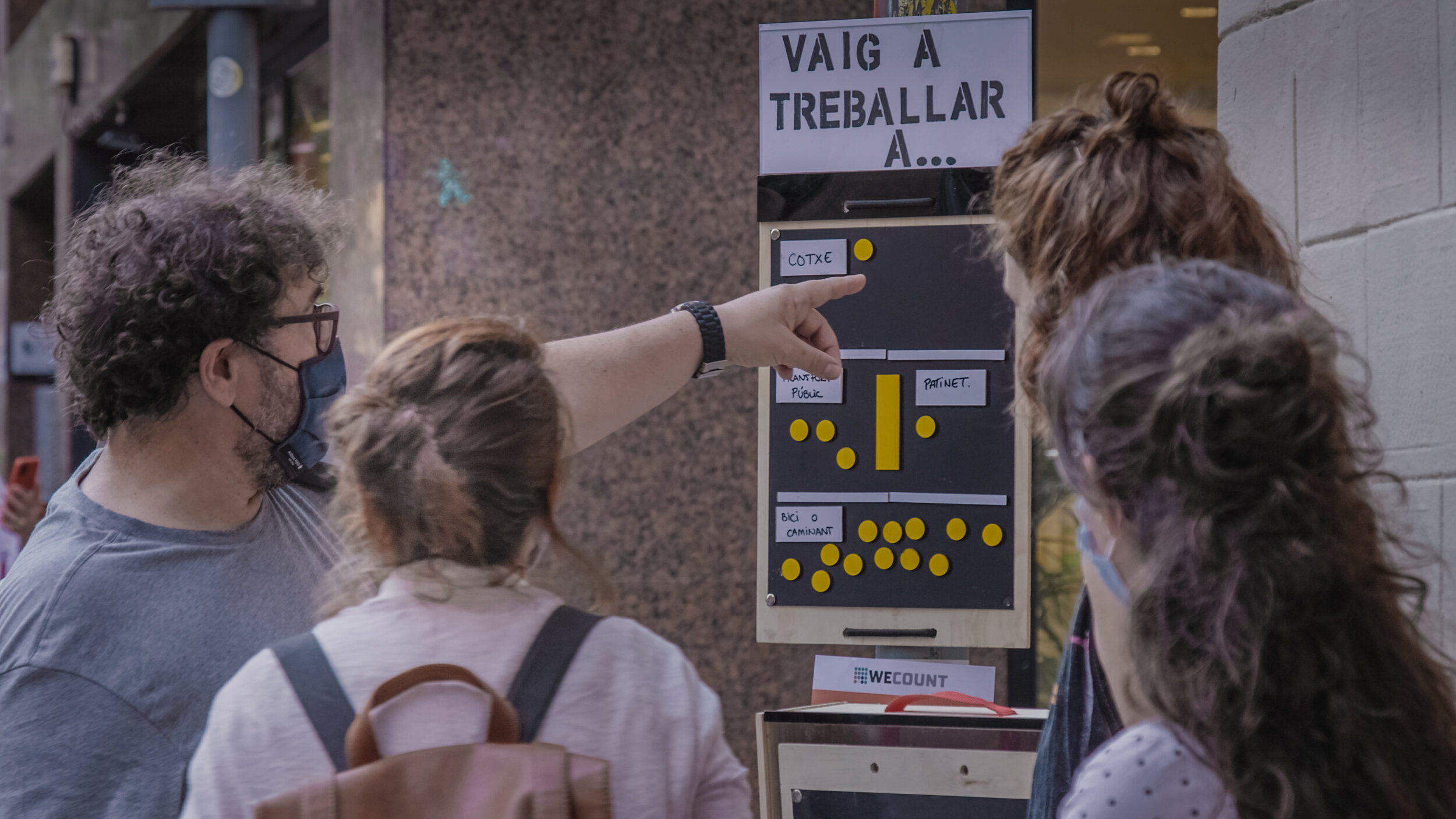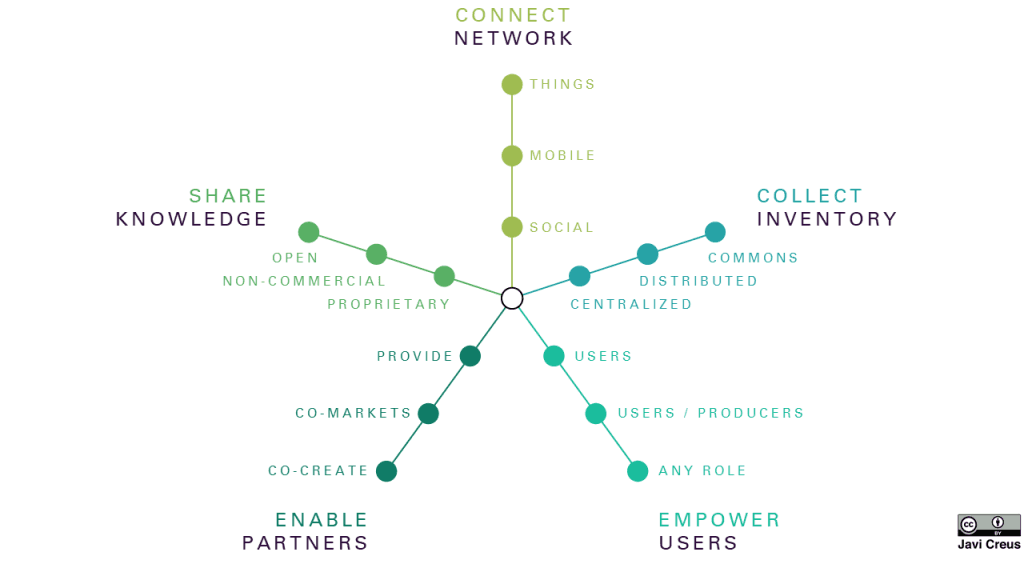Disruptive businesses
Disruptive businesses
Pentagrowth: Connects capabilities to strengthen your business future
Pentagrowth: Connects capabilities to strengthen your business future
15 de septiembre de 2021


By the editorial team. (Original publication in English)
Is your company prepared for the change? Does it contribute to the world of tomorrow? If you find yourself asking these questions, now is the time to act. Time is running out, but there is still time. Here you will find a roadmap that will help you lead your ecosystem and embrace new challenges.
Sebastian Klemm, director of Proofing Future: Bridging People + Ideas, a social enterprise that gives visibility to entrepreneurs and impactful organizations, interviews Javi Creus, founder of Ideas for Change, on how organizational development and business model innovation can contribute to sustainable strategies and climate action goals in businesses and public authorities.
Learn in depth how the Pentagrowth methodology can help envision innovative solutions from the future to the present and how, by focusing on future possibilities, people become more open, inclusive, collaborative, and optimistic, thus increasing their capacity as change agents.
Sebastian Klemm: What makes the Pentagrowth system an effective methodology for companies, startups, and public authorities to design future-proof organizations and business models?
Javier Creus: We need better systems in almost all key functions of our society: energy, mobility, education, health. We are quite aware of the challenges each system faces, but we rarely leverage the solutions generated from the technological and social innovation that will accelerate change and provide new opportunities.
Companies are often trapped in “path-dependent” visions. Pentagrowth helps companies anticipate “creative destruction,” liberating their assets and capabilities with emerging technologies so they can become disruptors themselves instead of being “disrupted.”
Startups have no legacy, so their business models must aspire to generate and capture “new value.” In this case, Pentagrowth helps them streamline and focus their value proposition and anticipate the technological challenges that will accelerate their growth.
We have already witnessed how each new technological wave allows citizens, both individually and collectively, to become active producers and economic agents beyond being passive consumers and recipients of services. Public institutions must integrate these new civic capabilities to design new services that truly address the concerns of the citizenry.

Sebastian Klemm: Many companies, startups, and municipalities are committing to achieve climate change mitigation targets that require them to innovate their business models and transform traditional practices to meet the set goals. How can the Pentagrowth methodology help organizations leverage their abundance of talent, data, capabilities, and skills to strengthen their climate action?
Javier Creus: We have observed that projecting from the future to the present, envisioning innovative solutions instead of incremental gains built from the present, enables all types of organizations to free themselves from historical limitations and fears of existing “immune systems” that resist structural change. By focusing on future possibilities, people become more open, inclusive, collaborative, and optimistic, thereby increasing their capacity as change agents.
Sebastian Klemm: The five growth levers identified and applied in the Pentagrowth method are “Connecting the Network,” “Gathering the Inventory,” “Empowering users,” “Upgrading users,” and “Sharing Knowledge.” Can you describe how the process in each lever increases an organization’s growth potential?
Javier Creus: These five levers synthesize the data analysis we conducted among 50 organizations that have grown more than 50% in users and revenue year on year for five consecutive years. What we found is that all their disruptive business models could be explained by combining at least two of these levers.
Disruptive business models rely on the deployment of emerging communication networks that enable the connection of things that were previously disconnected and devise new forms of value from them. The more nodes are connected - places, people, situations, things - the greater their growth potential. “Connecting Networks.”
Such models rely not only on their own assets but can also build their stock by accessing underutilized distributed assets as Airbnb does with apartments or open assets, such as open data or software. The less effort you have to put into building your inventory, the faster you can grow. “Gathering the Inventory.”
At the same time, disruptive business models leverage the productive capabilities of citizens that new technologies enable, producing data, content, photos, or videos. Growth potential increases as work is performed not by the organization, but by its users. “Empowering citizens.”
Disruption in industries occurs when a new form is widely adopted. Competition is no longer among companies, but among business ecosystems. The larger and more diverse the companies that build the business above yours, the greater the growth potential. “Enhancing relationships with partners.”
Finally, disruption can be promoted by communities that share knowledge and can even be produced by them. The larger the community that sees value in preserving and fostering what you share, the faster you can grow. “Sharing Knowledge”

Sebastian Klemm: From a 2-day bootcamp to long-term support. Can you give examples of how you have adapted the Pentagrowth methodology to the different needs of startups, acceleration programmes, and the innovation phases of business models in companies and organizational change in public authorities?
Javier Creus: We always conduct the Pentagrowth process with teams consisting of 5 or 7 people with different knowledge and skills. When we work with a large company or a complete system, we can execute the process with up to ten teams in parallel, with the help of certified Pentagrowth professionals and using our online academy.
The ideation process consists of four steps:
anticipate: explore the possibilities of the next technological and social wave leading to the definition of a #CoolFuture.
discover: reevaluate the value of existing assets of that #CoolFuture, ultimately identifying those resources with the highest future potential.
explore: how the five levers of exponential growth will be available in the future system configuration, ultimately selecting those that could most contribute to a disruptive business model.
combine: internal assets with available system levers to design new proposals that generate much more value to sustain the organization. After ideation, we support our clients in validating and prototyping the anticipated solutions, concluding with a Go/No go, In/Out recommendation on how to proceed.
We can carry out the process in express mode, in two full days of work after investing enough prior time for research and framing, to provide a scenario that changes participants' thinking in the anticipation step. During the Covid-19 pandemic, we designed and executed a five-week consulting process for a single team in which we sought a fit for the existing business model to advance in post-Covid business environments.
When we work with companies, we usually propose a complete Pentagrowth Sprint, involving at least four different teams with weekly meetings and tasks. At this working pace, we can guarantee the design of at least one innovative business model for each team that we can validate, prototype, and evaluate in the following three months.
The full article is available at this link from the Proofing Future blog. Do you want to accelerate your growth? Learn more about Pentagrowth and let’s talk!
By the editorial team. (Original publication in English)
Is your company prepared for the change? Does it contribute to the world of tomorrow? If you find yourself asking these questions, now is the time to act. Time is running out, but there is still time. Here you will find a roadmap that will help you lead your ecosystem and embrace new challenges.
Sebastian Klemm, director of Proofing Future: Bridging People + Ideas, a social enterprise that gives visibility to entrepreneurs and impactful organizations, interviews Javi Creus, founder of Ideas for Change, on how organizational development and business model innovation can contribute to sustainable strategies and climate action goals in businesses and public authorities.
Learn in depth how the Pentagrowth methodology can help envision innovative solutions from the future to the present and how, by focusing on future possibilities, people become more open, inclusive, collaborative, and optimistic, thus increasing their capacity as change agents.
Sebastian Klemm: What makes the Pentagrowth system an effective methodology for companies, startups, and public authorities to design future-proof organizations and business models?
Javier Creus: We need better systems in almost all key functions of our society: energy, mobility, education, health. We are quite aware of the challenges each system faces, but we rarely leverage the solutions generated from the technological and social innovation that will accelerate change and provide new opportunities.
Companies are often trapped in “path-dependent” visions. Pentagrowth helps companies anticipate “creative destruction,” liberating their assets and capabilities with emerging technologies so they can become disruptors themselves instead of being “disrupted.”
Startups have no legacy, so their business models must aspire to generate and capture “new value.” In this case, Pentagrowth helps them streamline and focus their value proposition and anticipate the technological challenges that will accelerate their growth.
We have already witnessed how each new technological wave allows citizens, both individually and collectively, to become active producers and economic agents beyond being passive consumers and recipients of services. Public institutions must integrate these new civic capabilities to design new services that truly address the concerns of the citizenry.

Sebastian Klemm: Many companies, startups, and municipalities are committing to achieve climate change mitigation targets that require them to innovate their business models and transform traditional practices to meet the set goals. How can the Pentagrowth methodology help organizations leverage their abundance of talent, data, capabilities, and skills to strengthen their climate action?
Javier Creus: We have observed that projecting from the future to the present, envisioning innovative solutions instead of incremental gains built from the present, enables all types of organizations to free themselves from historical limitations and fears of existing “immune systems” that resist structural change. By focusing on future possibilities, people become more open, inclusive, collaborative, and optimistic, thereby increasing their capacity as change agents.
Sebastian Klemm: The five growth levers identified and applied in the Pentagrowth method are “Connecting the Network,” “Gathering the Inventory,” “Empowering users,” “Upgrading users,” and “Sharing Knowledge.” Can you describe how the process in each lever increases an organization’s growth potential?
Javier Creus: These five levers synthesize the data analysis we conducted among 50 organizations that have grown more than 50% in users and revenue year on year for five consecutive years. What we found is that all their disruptive business models could be explained by combining at least two of these levers.
Disruptive business models rely on the deployment of emerging communication networks that enable the connection of things that were previously disconnected and devise new forms of value from them. The more nodes are connected - places, people, situations, things - the greater their growth potential. “Connecting Networks.”
Such models rely not only on their own assets but can also build their stock by accessing underutilized distributed assets as Airbnb does with apartments or open assets, such as open data or software. The less effort you have to put into building your inventory, the faster you can grow. “Gathering the Inventory.”
At the same time, disruptive business models leverage the productive capabilities of citizens that new technologies enable, producing data, content, photos, or videos. Growth potential increases as work is performed not by the organization, but by its users. “Empowering citizens.”
Disruption in industries occurs when a new form is widely adopted. Competition is no longer among companies, but among business ecosystems. The larger and more diverse the companies that build the business above yours, the greater the growth potential. “Enhancing relationships with partners.”
Finally, disruption can be promoted by communities that share knowledge and can even be produced by them. The larger the community that sees value in preserving and fostering what you share, the faster you can grow. “Sharing Knowledge”

Sebastian Klemm: From a 2-day bootcamp to long-term support. Can you give examples of how you have adapted the Pentagrowth methodology to the different needs of startups, acceleration programmes, and the innovation phases of business models in companies and organizational change in public authorities?
Javier Creus: We always conduct the Pentagrowth process with teams consisting of 5 or 7 people with different knowledge and skills. When we work with a large company or a complete system, we can execute the process with up to ten teams in parallel, with the help of certified Pentagrowth professionals and using our online academy.
The ideation process consists of four steps:
anticipate: explore the possibilities of the next technological and social wave leading to the definition of a #CoolFuture.
discover: reevaluate the value of existing assets of that #CoolFuture, ultimately identifying those resources with the highest future potential.
explore: how the five levers of exponential growth will be available in the future system configuration, ultimately selecting those that could most contribute to a disruptive business model.
combine: internal assets with available system levers to design new proposals that generate much more value to sustain the organization. After ideation, we support our clients in validating and prototyping the anticipated solutions, concluding with a Go/No go, In/Out recommendation on how to proceed.
We can carry out the process in express mode, in two full days of work after investing enough prior time for research and framing, to provide a scenario that changes participants' thinking in the anticipation step. During the Covid-19 pandemic, we designed and executed a five-week consulting process for a single team in which we sought a fit for the existing business model to advance in post-Covid business environments.
When we work with companies, we usually propose a complete Pentagrowth Sprint, involving at least four different teams with weekly meetings and tasks. At this working pace, we can guarantee the design of at least one innovative business model for each team that we can validate, prototype, and evaluate in the following three months.
The full article is available at this link from the Proofing Future blog. Do you want to accelerate your growth? Learn more about Pentagrowth and let’s talk!


